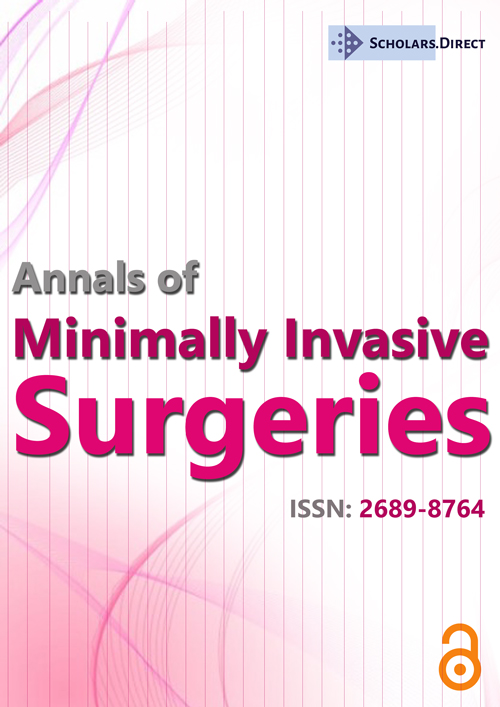Realising the Value of Catheters in Healthcare
Surgical procedures have rallied over the last decade with higher precision and less invasiveness [1]. Moreover, advent of micromachines resuscitated the catheters manufacturing and rekindled the medical devices industry [2]. Technological efforts are perpetrated to subvert beleaguered medical operations and ensure precise diagnosis and therapeutics by using advanced multifunctional and multiplexed system. Catheters, thin elongated tube-shaped devices, are widely used in clinical and surgical practices to access the body cavity, duct, or vessel, brain, skin or adipose tissue. Besides their applications such as body fluids drainage, drug delivery or microdevices commissioning, catheters can assist surgical operations during health examination and treatment [3].
Specialty catheters are designed to meet clinical requirements. Electronics can be instated onto the catheters providing flexibility for sundry leveraging i.e., temperature or pressure sensory or amputation (energy-to-tissue delivery). However, the manufacture of electronic devices from traditional rigid materials forbids the formation of sleek articulation between catheter and targeted tissues resulting in awry agglomeration of physiological rudiments and wretched targeted amputation. The soaring development of electronics for biomedical applications provides an exquisite solution for long-standing and fastidious surgeries [4]. Utilization of microelectromechanical structures to manufacture ultrathin microelectronics and advancements in lessening the elastic modulus organic electronics commence an unique opportunity to enhance the catheters operationality.
A previous study showed that the use of polymers instead of commercial silicon in pressure sensors incorporated in catheters can enhance the sensitivity and conformity and lessen the cost and response time [5]. The complexity of tissues-related medical applications demands carrier materials with sophisticated architecture and enactment for exquisite therapeutics. The remarkable prowess of electronic micro-systems to fiddle around curvilinear catheters and soft tissues succors the multifunctional and entangled probing and effleurage of organs for infallible diagnosis and accurate treatment. The more extensive interrogation of interfaced organs that can be elaborated about local biophysiological attributes of the tissues, the more accurate and bespoke ascription can be made by the medical personnel [6]. The interwoven application of micro device i.e., electrodes or pressure sensors, avails the in tandem recording of electrocardiograms and pressure fields on a Langendorff rabbit heart [7].
Clustering of catheters operability is the sine qua non for intravenous treatment such as chemotherapy, other drugs, blood transfusions, and fluids this way [8]. Juggling of the ebbs and flows in catheters manufacturing, researchers have fabricated and trialled catheters with delicate interfacing with tissue surface and precise parameters mapping. Adequate manipulation and steadfast monitoring of surgical interventions is radical in clinical operations, i.e. cardiac or urinary catheterization.
In summary, researchers aim to fabricate catheters with high manoeuvrability in order to enhance the contact with tissue surfaces, decrease the number of insertions and lessen surgical times. Integration of micro-electronic devices and advanced materials will lead to fabrication of high-specialized catheters with multimodal and multiplexed functions, thus, may enhance surgical performance and patient outcomes.
Conflict of Interest
The authors declare no conflict of interest.
References
- Hernández Vaquero D, Fernández Fairen M, Torres Perez A, et al. (2012) Minimally invasive surgery versus conventional surgery. A review of the scientific evidence. Rev Esp Cir Ortop Traumatol 56: 444-458.
- Kim RH, Kim DH, Xiao J, et al. (2010) Waterproof AlInGaP optoelectronics on stretchable substrates with applications in biomedicine and robotics. Nat Mater 9: 929-937.
- Ashammakhi N, Ahadian S, Darabi MA, et al. (2019) Minimally invasive and regenerative therapeutics. Adv Mater 31: e180404.
- Holmes Martin K, Zhu M, Xiao S, et al. (2022) Advances in assistive electronic device solutions for urology. Micromachines 13: 551.
- Hasenkamp W, Forchelet D, Pataky K, et al. (2012) Polyimide/SU-8 catheter-tip MEMS gauge pressure sensor. Microdevices 14: 819-828.
- Slepian MJ, Ghaffari R, Rogers JA (2011) Multifunctional balloon catheters of the future. Interv Cardiol (Lond) 3: 417-420.
- Han M, Chen L, Aras K, et al. (2020) Catheter-integrated soft multilayer electronic arrays for multiplexed sensing and actuation during cardiac surgery. Nat Biomed Eng 4: 997-1009.
- (2020) Catheters and ports in cancer treatment.
Corresponding Author
Spyridon Achinas, Faculty of Science and Engineering, University of Groningen, Nijenborgh 4, 9747 AG Groningen, Netherlands
Copyright
© 2022 Poulios E, et al. This is an open-access article distributed under the terms of the Creative Commons Attribution License, which permits unrestricted use, distribution, and reproduction in any medium, provided the original author and source are credited.




